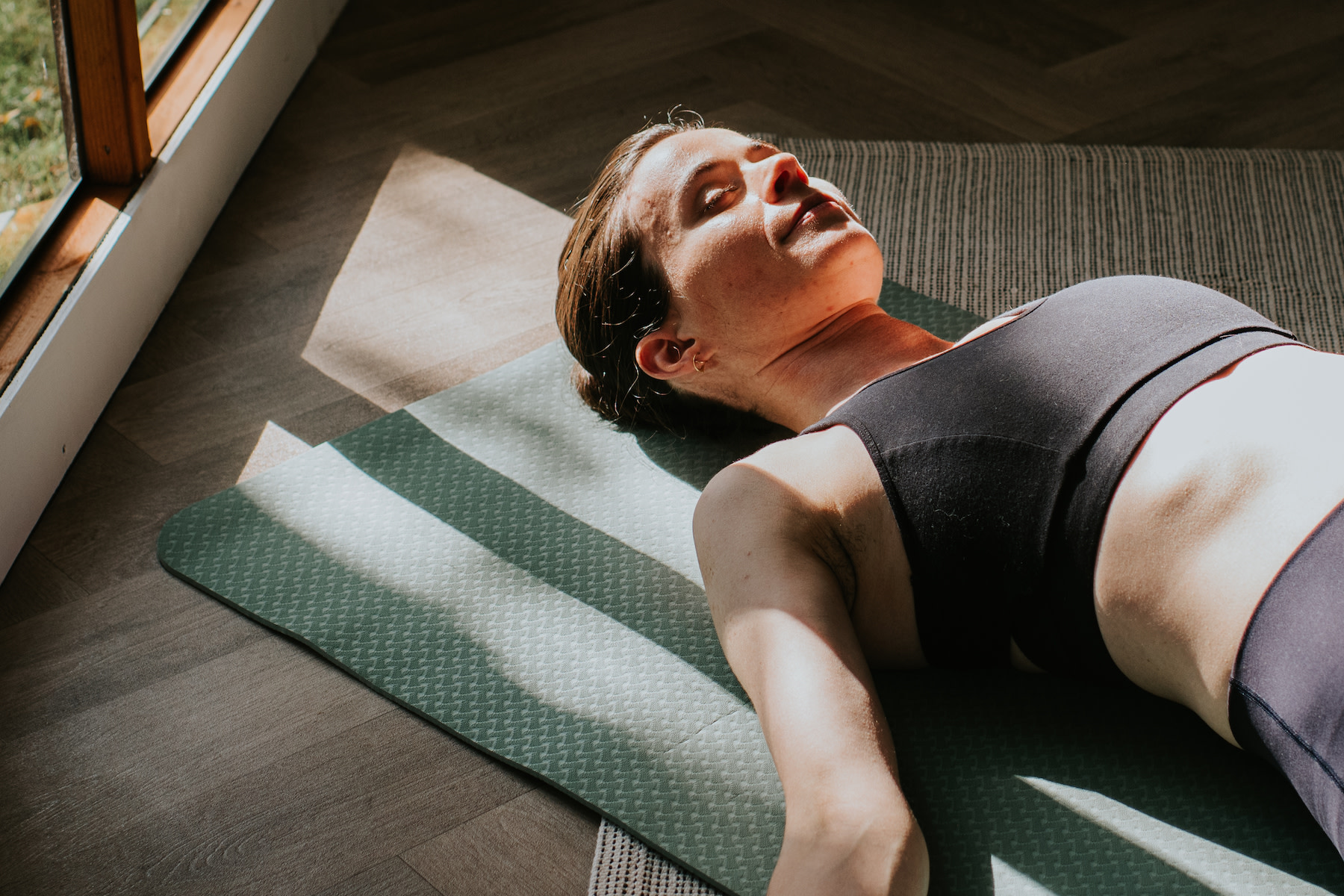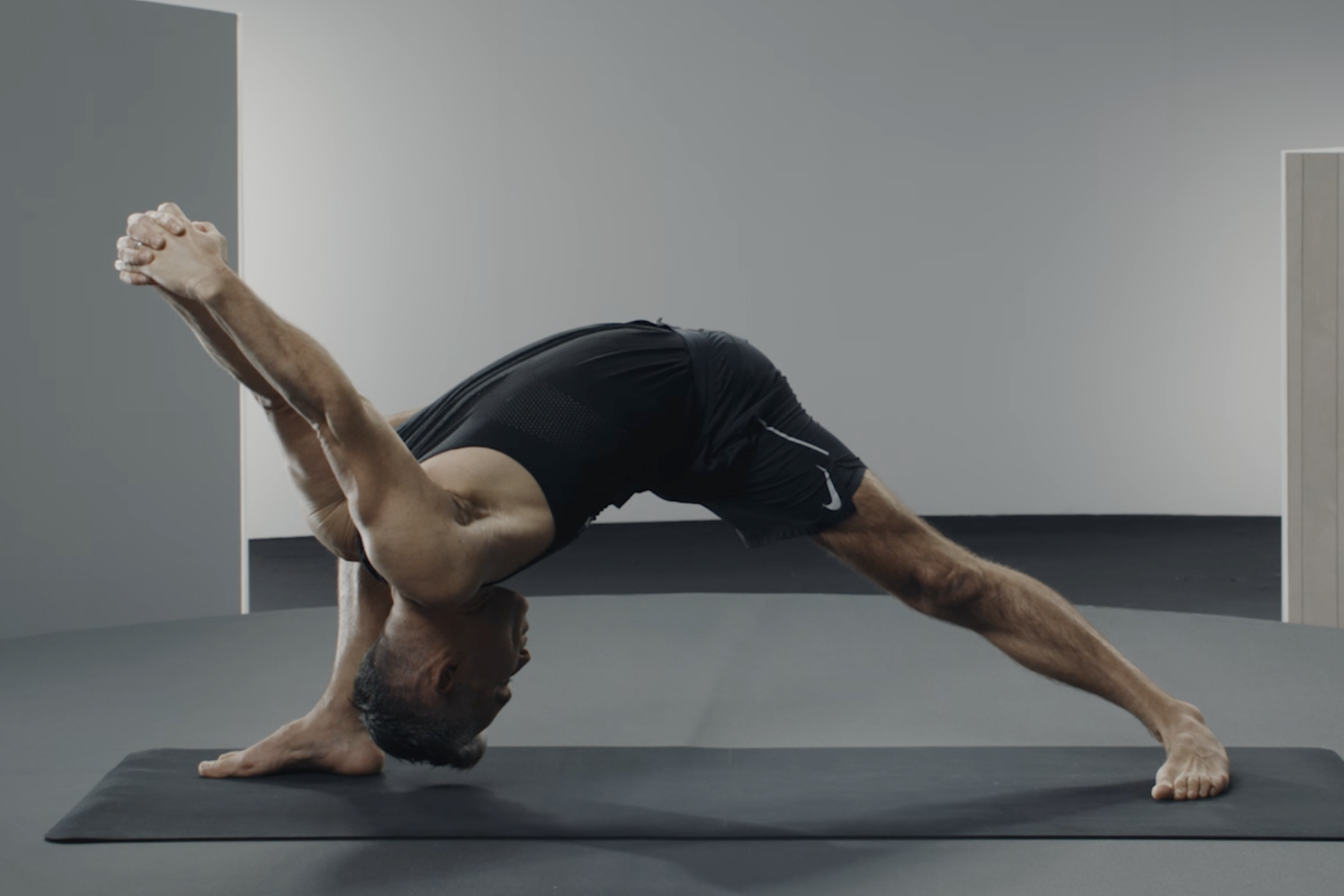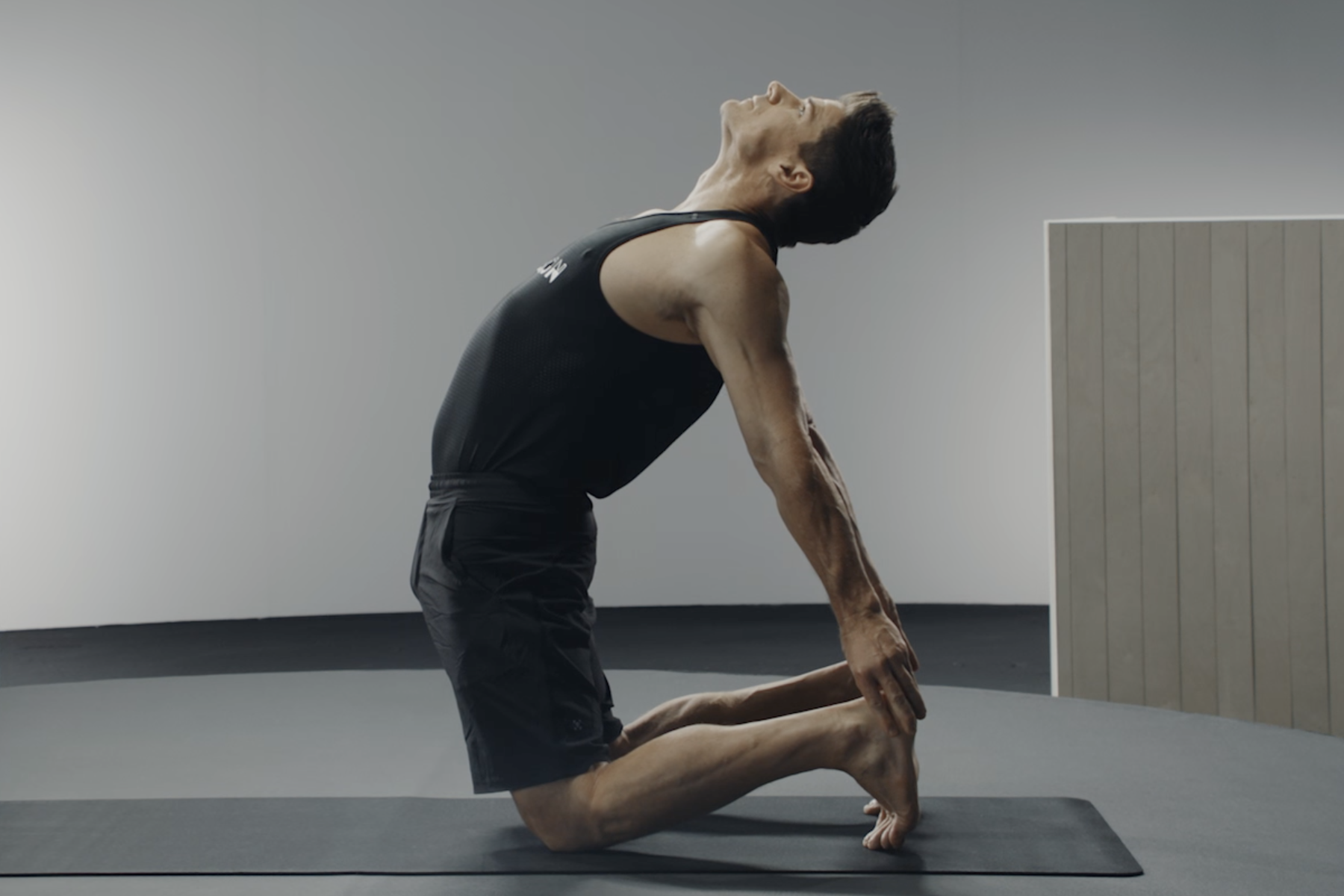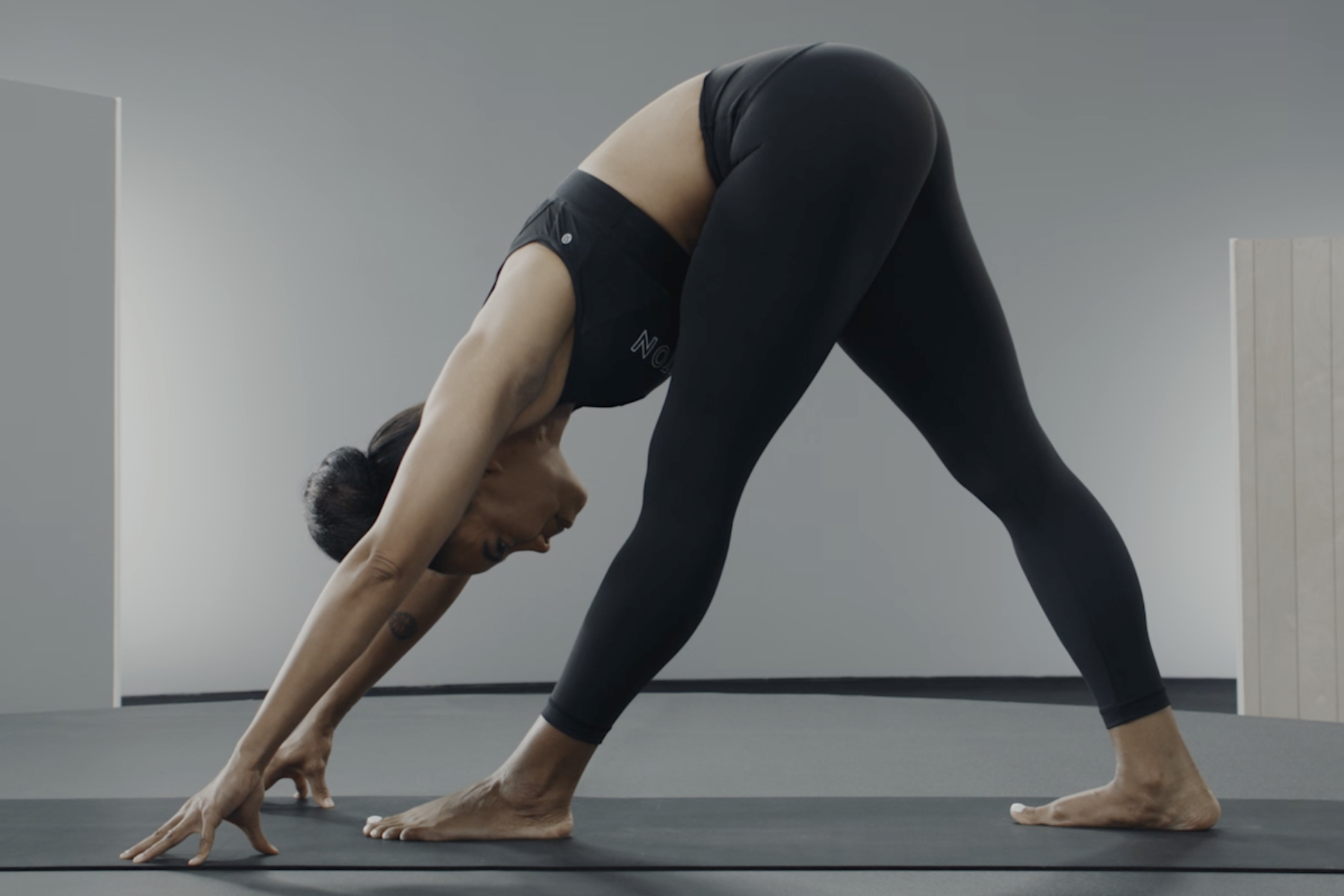
Catherine Falls Commercial/Moment via Getty Images
5 Heart-Opening Yoga Poses to Give Your Chest a Stretch
Add a little love to your practice.
By Elizabeth Millard•
What Are Heart-Opening Yoga Poses?
The Benefits of Heart-Opening Yoga Poses
How Often Should You Practice Heart-Opening Yoga Poses?
Our 5 Favorite Heart-Opening Yoga Poses
It’s time to open your… heart? While you may be familiar with hip openers in yoga, you may be less so with heart openers, even though they’re a critical part of your practice. It sounds either physiological or philosophical, and in actuality, it's a bit of both.
Discover more ways to reach your goals with Peloton
What Are Heart-Opening Yoga Poses?
"A heart-opening posture is one that focuses on stretching the space between [your] shoulders, chest, and ribcage," says Peloton instructor Dr. Chelsea Jackson Roberts.
On a physical level, you’ll bring your shoulder blades closer together behind you, resulting in your back being slightly arched—or, in some cases, very arched. In a heart-opening posture, your chest "expands," making more space for your lungs on an inhale, and helping you breathe a little deeper.
When it comes to the philosophical part, feeling connected and open in your heart is figurative as well as literal, inviting in passion, generosity, community, and of course, love. When those two aspects are combined, it allows you to tap into the power of your own heart.
The Benefits of Heart-Opening Yoga Poses
1. They Counteract Tech Neck
"Because so many humans are engaging with the world through computers, phones, and other devices, there's a need to counter any shape that 'closes the heart' and tightens the space around the heart's center," Dr. Chelsea says.
A look around any public space will give you plenty of examples of that posture, with people bent over their phones, causing their shoulders to hunch inward. It’s a condition commonly referred to as “tech or text neck.” Research published in Acta Medica Academica calls it a new epidemic that can lead to chronic back pain, shoulder tightness, migraines, and muscle tension in your arms. Heart-opening yoga poses can help alleviate the muscle tightness caused by all that scrolling, clicking, and typing.
2. They Strengthen Stabilizing Muscles
In general, yoga complements any type of workout—from running and cycling to rowing and strength training—says Carol Mack, a physical therapist and strength and conditioning coach in Cleveland, Ohio.
"In addition to helping with mobility, holding poses helps strengthen the stabilizing muscles that don't often get strengthened during regular activities like running, for example," she says. With heart openers, the muscles in your shoulders, chest, and neck can be activated in new ways. That can not only make movement more efficient, but also help prevent injuries, she says.
3. They Can Improve Your Emotional Regulation
The idea of opening your heart and practicing poses that do just that can have a meaningful psychological effect. While there’s a lack of direct scientific evidence on the particular impact of heart-opening yoga poses, research published in Psychology and Neuroscience found that yoga helps improve emotional functioning. That means you may feel more in control in situations that involve anger, sadness, or anxiety. A 2020 study published in the Journal of Family Medicine also found that yoga can help emotional regulation, as well as feelings around self-esteem.
How Often Should You Practice Heart-Opening Yoga Poses?
"Heart-opening poses should be practiced as often as you feel the need," Dr. Chelsea says. "I'm an advocate of practicing movement like yoga on a regular basis, so that when you're in need of that release, your body is already prepared."
Keep in mind that yoga classes tend to blend a variety of different poses, so heart openers are often in the same sequence as a forward fold, which provides a counterbalance. You expand with a heart-opening yoga pose before softening into a contraction by rolling inward. Paying attention to how you feel in those different movements is key, Dr. Chelsea says.
"Our yoga practice is unique to our bodies," she adds. "I invite you to listen and decide how deeply to move into a pose. If you're able to breathe without feeling restricted, you've found your sweet spot!"
Avoid stretching too far, too quickly, Mack adds. While it may be tempting to open your heart as much as you can, taking a more gradual approach can prevent you from straining your chest and shoulder muscles.
"Gently try to open the chest, and gradually increase this movement over the first few sessions if it's not painful to do so," she says. "As with any type of movement, it's important not to lose proper form."
Our 5 Favorite Heart-Opening Yoga Poses

Devotional/Humble Warrior (Baddha Virabhadrasana)
This pose builds strength in your legs, while giving you a deeper stretch in your upper body.
Start in Warrior 1 Pose (Virabhadrasana 1).
Lift your chest, roll your shoulders back, and interlace your hands behind your back.
Bend your front knee until your thigh is parallel to the floor at about 90 degrees (or as close to 90 degrees as you can comfortably get).
Gently bend forward toward your front leg. Rotate slightly outward. Your shoulder can rest on your knee or inside your leg.

Camel Pose (Ustrasana)
With this heart opener, listen to your body and progress gradually.
Start on your knees. Position them hip-width distance apart.
Place your hands on your lower back. Draw your shoulder blades back and down.
Continue to roll your shoulders back while keeping your hips as far forward as possible, creating a backbend with your chest lifted.
As you lean back, if it feels comfortable, extend your hands to your heels. Continue to press your hips forward as your head drops back.
Stay for a couple breaths. Slowly return to the starting position.

Corpse Pose (Savasana)
Sure, this pose translates to "corpse pose," but don't let that put you off. This resting pose appears at the end of a class, when you're lying on your back. To turn this into a heart opener, Dr. Chelsea recommends placing a block between your shoulder blades. You can also use a towel, folded blanket, or another yoga mat. Regardless of the prop you use, the idea is to create more elevation so that your shoulder blades can gently fall toward each other.

Pyramid Pose, Variation (Parsvottanasana)
Although this is a forward fold, interlacing your hands behind your back turns it into a heart opener.
Begin by standing with your hips squared. Step one foot back (approximately two to four feet). Your back foot can continue pointing toward the top of your mat or pivot to a 45-degree angle, based on what feels comfortable for you.
Keep your hips facing forward as you interlace your hands behind your back.
Hinge at your hips. Begin to fold forward toward your front thigh.
Focus on keeping your chest open. Take a few breaths before returning to standing. Repeat on the other side.

Fish Pose (Matsyasana)
Lie on your back with your knees bent and feet on the floor. Inhale and lift your pelvis slightly off the floor. Slide your hands, palms down, below your butt.
Position your forearms and elbows close to the sides of your body, tucking them in.
Press your forearms and elbows firmly against the floor. Lift your upper torso away from the floor as you come into a slight backbend.
The top of your head should remain on the floor, and there should be minimal weight on your head.
Stay for a few breaths. Gently come out of the pose by lowering your torso first.

Peloton App
Access thousands of classes with no equipment needed.
This content is for informational and educational purposes only and does not constitute individualized advice. It is not intended to replace professional medical evaluation, diagnosis, or treatment. Seek the advice of your physician for questions you may have regarding your health or a medical condition. If you are having a medical emergency, call your physician or 911 immediately.
This content is for informational and educational purposes only and does not constitute individualized advice. It is not intended to replace professional medical evaluation, diagnosis, or treatment. Seek the advice of your physician for questions you may have regarding your health or a medical condition. If you are having a medical emergency, call your physician or 911 immediately.
Want to strengthen your yoga practice?
We can help. Enter your email to get articles, instructor tips, and updates from Peloton sent to your inbox.
By providing your email address, you agree to receive marketing communications from Peloton.
For more about how we use your information, see our Privacy Policy.








